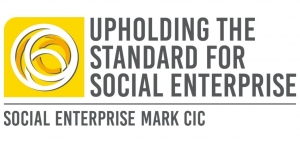The case for investing in the wellbeing of your staff, and the key to getting it right
By Heather Kelly, Founder of Aura Wellbeing
“When the well’s dry, we know the worth of the water.” Benjamin Franklin
 Keeping our wells abundant, thriving with water is essential for survival. For an organisation, survival and success is dependent on performance of employees. For staff to perform at their best, to thrive, being at both optimal physical and mental health is a big contributor.
Keeping our wells abundant, thriving with water is essential for survival. For an organisation, survival and success is dependent on performance of employees. For staff to perform at their best, to thrive, being at both optimal physical and mental health is a big contributor.
Workplace wellbeing is something that’s been making a recent splash in the business world. Some employers may be still looking on with hesitation to get their feet wet, wondering if it’s a fad or fashion. Well think back to Corporate Social Responsibility fifteen years ago and where it’s evolved to today, the fashion of workplace wellbeing is likely to stay, and here’s why.
The majority of the measures by companies to improve workplace wellbeing were until recently considered ‘perks’ or employee benefits. But as research from the Global Wellness Institute shows, $3billion is the current cost of work-related stress to businesses worldwide. And the 2017 Farmer/Stevenson Thriving at Work report revealed that the yearly cost of absenteeism to UK employers alone is £8.2billion. And these numbers are on the rise.
The matter of employee health and wellbeing is no longer a ‘nice to have’, it’s becoming a hard, economic factor of productivity. Governments, economists and a growing number of employers are urging that it’s time to take this topic as seriously as we take research and development and investment in technology.
The positive news is progress is being made. The UK government has set workplace mental health standards for employers to follow (Farmer/Stevenson Thriving at Work); some employers are now including performance indicators on staff health and wellbeing in annual reports (like Thames Water); and even the young Royals are campaigning for improved mental wellbeing in workplaces (Heads Together & Mental Health at Work).
So, if you’re a business leader who is considering getting your feet wet, you may ask, where do we even start? And what’s the most efficient and effective way to embark on the journey.
With mental health or stress contributing to the majority of absences, it’s suggested that core investment should be made here. But with more research now making links between what we eat and our mental and physical wellbeing, it’s important to also promote healthy eating alongside physical exercise for overall illness prevention.
But the key to getting it right is not making this a box ticking exercise. According to survey data from The Global Wellness Institute, if an employee identified their company as genuinely “caring about their health/wellness” that employee’s overall health, stress and job engagement/satisfaction improved significantly.
But what does creating a culture of care look like in practice?
- Having a robust wellbeing strategy and running targeted awareness campaigns throughout the year.
- A culture that nurtures strong, supportive relationships between staff and managers (offering training on how to effectively line manage mental wellbeing).
- Execs & managers leading by example, consistently walking the talk when looking after their own wellbeing alongside the workforce’s.
- Encouraging a culture where people can be as open and honest about their mental health as they are about their physical health.
- Encouraging unplugging from work on holidays and during unsociable hours.
- Providing paid wellness days for staff to look after self-care.
For Social Enterprises, often small or medium-sized businesses, operating with leaner teams and operating budgets—reliable and well human resource is critical. When business objectives are already social mission-driven, creating a culture of care by looking after the wellbeing of one’s own arguably has a natural values-alignment.
It’s no surprise that one of the UK’s leading providers of workplace mental health support, Mental Health First Aid CIC, is a social enterprise who shuts its doors one day a year for all staff to take a wellness day.
For such future-thinking businesses, starting to re-assess their role in promoting wellbeing as both a business imperative and as part of their wider social responsibility is becoming fashion—they’re understanding the worth of their workers so, as Benjamin Franklin would say, their wells will not risk going dry. Even if the bottom line or Health & Safety are the initial motivators for many, with consistent top-down commitment, creating a genuine culture of care and thus a sustainably well workforce is achievable.
Heather Kelly was formerly Business Development Manager at Social Enterprise Mark CIC, and now works as a Wellbeing Consultant and Health and Wellbeing Coach at Aura Wellbeing.




